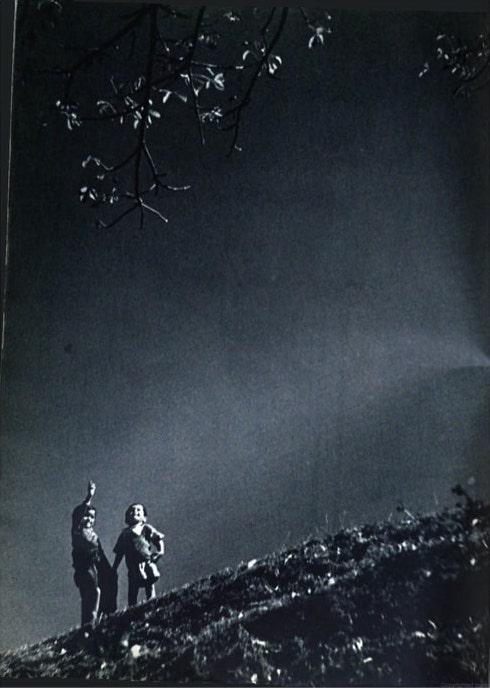Recalling AJ Patel: A Visionary in the World of Cinema and Photography

Central Camera Company: Milestones in Indian Photography. (Advertisement in the Times of India. Mumbai, 14 Oct 1944. Image courtesy of ProQuest Historical Newspapers.)
The 1930s were a moment of great enthusiasm in the field of Indian photography. There was an exponential surge in the number of camera clubs that sprung up around the country to cater to the potential and ambitions of practitioners. As spaces to further the artistic pursuit of photography, these clubs soon came to be flocked by artists and hobbyists alike. Compared to the earlier clubs that were run by British practitioners and were limited to the Presidencies, these new clubs were set up under Indian leadership and proliferated far beyond the Presidency towns. Ambalal Jhaverbhai Patel (1907–61, hereafter AJ Patel) was one such photography enthusiast. He was particularly interested in the apparatus that made this photography possible. However, very little writing exists about AJ Patel within Indian scholarship today, despite his significant contributions to the world of photography and cinema—for which he was recognised nationally and internationally in his time.

Activities of the Central Camera Company between 1933–42. (Advertisement in Filmindia. Mumbai, July 1942. Image courtesy of Archive.org)
Founded in 1932, Patel’s Central Camera Company started as a small store. This soon expanded to become a five-storeyed building in Mumbai that included other retail stores of cine and still cameras and their accessories, portrait and commercial studios, a production department for educational films, a projection room and a publication department where India’s first photography journal, Camera in the Tropics was also printed. Patel’s burgeoning business of camera equipment led to his collaboration with the Indian Government in the late 1940s as a part of their rural education programmes. Referring to the infrastructure provided for these programmes, film scholar Ravi Vasudevan writes in “Official and Amateur: Exploring Information Film in India”: “One hundred 16 mm Kodak projectors were purchased by the government from the Central Camera Company to screen films in several districts. It was also reported that the films came from Patel’s newly started firm, Educational Films of India…” Patel’s blatant monopoly over camera equipment and their circulation was viewed with grave suspicion. One of the most vocal critics was Filmindia magazine’s editor Baburao Patel, who summed up all the dealings made with respect to studio space and equipment rental between the Government and AJ Patel in his editorial for the February 1949 issue. He wrote, “For half of that amount, the Government of India could have built the most up-to-date studio, laboratory, editing room and offices, all within six months, and all this property would have belonged to our people, instead of helping Ambalal Patel to turn his extravagance into a profitable investment.”

A.R.P and You: Mr. Patel’s Invaluable Wartime Contribution to India’s Public. (In Filmindia. Mumbai, August 1942. Image Courtesy of Archive.org.)
Throughout the 1930s and the 1940s, Patel continued his practice as a photography hobbyist. Patel photographed the famous Indian actress, Esther Abraham, aka Pramila and these got him initial international recognition. His first international exhibition was in 1939 and the British Empire exhibited a large number of his photographs. Following this, he was honoured as a Fellow of the Photographic Society of London. Recognition for his work continued to grow, putting him in close contact with a network of renowned photographers, such as Margaret Bourke-White, Max Thorek and Bradley Smith among others. As a pictorialist, Patel’s photographs exhibited a strong sense of form that, as fellow practitioner Nirmal A. Das (1945) put it, was “…something above both photography and painting.”

“Patel’s dramatic use of the spotlight effect of the sun and the pleasing frame formed by the branches tie in with the photo’s spiritual quality.” (Photograph by AJ Patel. In Popular Photography. United States of America, August 1945. Image courtesy of Google Books.)
In 1946, Patel established the Film Center in Mumbai, a processing lab for black-and-white film footage. About five years later, it began developing colour film and eventually became the largest processor in the country. In a biography of Patel titled A J Patel-A Visionary, filmmaker Sanjit Narwekar describes the rather arduous task of testing colour film for India’s tropical climate, the first experiment of its kind in the country. This process also resulted in the creation of a set of well-trained technicians in the medium of colour processing, who owed their training to Patel’s vision and dynamism.

Cinematica: Photograph of Carriage Wheels for an Accompanying Article by Harris B. Tuttle, Associate Photographic Society of America, Associate Royal Photographic Society. (Photograph by AJ Patel. In Popular Photography. United States of America, March 1947. Image courtesy of Google Books.)
Filmindia’s editor Baburao Patel, while responding to a question from a reader about Indian newsreel companies wrote: “There is one owned by Ambalal Patel of Central Cine Corporation but it seems to be more interested in Paris fashions than news.” In newly independent India, Patel’s critics probably saw his efforts as antithetical to the nationalistic sentiment of that moment. But Patel’s contribution to photography is undeniable and was a huge step forward in our understanding of the medium. The extent of this remains to be studied in greater detail, but even with the knowledge we have available today, he deserves a prominent position within India’s photographic history.




